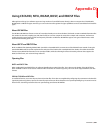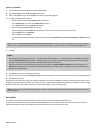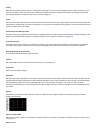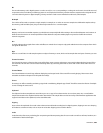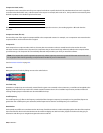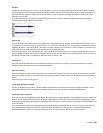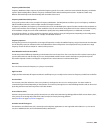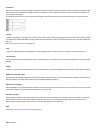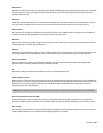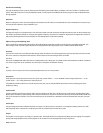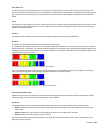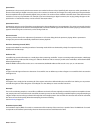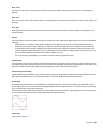DirectX
A set of Application Program Interfaces designed by Microsoft for multimedia development. A DirectX plug-in, such as the Sony Noise
Reduction DirectX Plug-In, uses the DirectX Media Streaming Services (DMSS) API. Because DMSS is a standard API, a DirectX plug-in can
be used in any application that supports DMSS.
Dithering
Dithering is the practice of adding noise to a signal to mask quantization noise.
See also Quantization Noise on page 354.
Drag and Drop
A quick way to perform certain operations using the mouse. To drag and drop, you click and hold a highlighted selection, drag it (hold
the left mouse button down and move the mouse) and drop it (let go of the mouse button) at another position on the screen.
Dynamic Range
The difference between the maximum and minimum signal levels. It can refer to a musical performance (high-volume vs. low-volume
signals) or to electrical equipment (peak level before distortion vs. noise floor).
Endian (Little and Big)
Little and Big Endian describe the ordering of multi-byte data that is used by a computers microprocessor. Little Endian specifies that
data is stored in a low-to-high byte format; this ordering is used by the Intel microprocessors. Big Endian specifies that data is stored in a
high-to-low byte format; this ordering is used by the Motorola microprocessors.
Equalization (EQ)
Equalizing a sound file is a process by which certain frequency bands are raised or lowered in level.
Fast Fourier Transform (FFT) Analysis
A Fourier Transform is the mathematical method used to convert a waveform from the Time Domain to the Frequency Domain.
Since the Fourier Transform is computationally intensive, it is common to use a technique called a Fast Fourier Transform (FFT) to
perform spectral analysis. The FFT uses mathematical shortcuts to lower the processing time at the expense of putting limitations on the
analysis size.
The analysis size, also referred to as the FFT size, indicates the number of samples from the sound signal used in the analysis and also
determines the number of discrete frequency bands. When a high number of frequency bands are used, the bands have a smaller
bandwidth, which allows for more accurate frequency readings.
File Associations
This dialog allows you to associate sound file extensions (such as .wav, .au, .snd, etc.) with Sound Forge software. This dialog is opened
from the File tab of the Preferences dialog.
File Format
A file format specifies the way in which data is stored. In Windows, the most common audio file format is the Microsoft .wav format. For
information on the different file formats supported by Sound Forge software, click here.
Frame Rate
Audio uses frame rates only for the purposes of synchronizing to video or other audio. To synchronize with audio, a rate of 30 non-drop
is typically used. To synchronize with video, 30 drop is usually used.
348
| APPENDIX E




